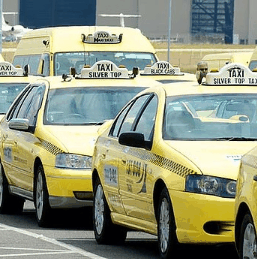
The Age is reporting today that Victorian taxi fares are set to jump by up to 30%, in a bid to improve service and improve driver’s incomes:
The cost of catching a taxi is set to rise by up to 30 per cent next month after the Napthine government decided to raise fares for the first time since 2008.
Exactly how much more passengers have to pay will depend on a range of factors including the time and day of travel and the distance…
The size of the increase varies, but will be greatest for short trips and at times of high demand such as Friday and Saturday nights…
Transport Minister Terry Mulder said the fare rise would increase the income of taxi drivers and operators, which would in turn improve customer service.
While taxi drivers are undoubtedly poorly paid, raising fares does not solve the underlying problem: that there is a lack of lack of taxi licences due to government regulation.
A key factor behind the unreliability of the taxi industry across Australia is that taxi licences have been artificially restricted via government regulation. In the case of Melbourne, the overall number of licences has barely risen since the 1970s, despite the huge growth in the city’s population.
Reflecting this undersupply, the price of Melbourne taxi licences had also skyrocketed – from under $130,000 in 1989 to over $500,000 in 2012 – an increase of over 7% per annum.
This deliberate undersupply of taxis has had some deleterious impacts on the industry.
The lack of competition and “closed shop” mentality has meant that there is minimal incentive to improve performance and provide better services. It has also driven a wedge between the driver, who typically earns a pittance, and the customer, who pays too much for the service. For example, according to the agency which sets taxi fares in New South Wales, a taxi driver earns a paltry $29,000 a year, whereas customer surveys of taxis costs and service typically show widespread disatisfaction.
As with land, the rental value component of taxi fares goes to the owners of the plates, just like rents on land. So taxi drivers are typically left paying the licence holder an exorbitant share of their fares – often 50% – leaving them with little left over.
The restriction on taxi licences is totally unnecessary, punishing drivers whilst also leaving customers paying high prices for (often) poor service.
If the Victorian Government truly wants to boost choice and consumer outcomes, whilst improving driver’s welfare, the best thing it could do is allow greater competition by expanding the availability of licenses, subject to meeting minimum performance standards.

